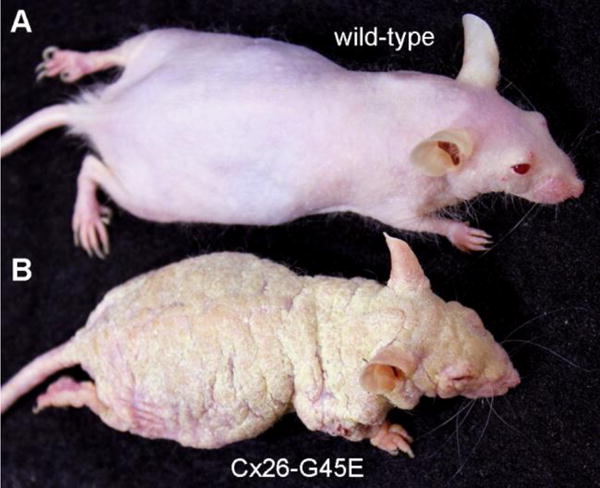Figure 1.

A mouse model of KID syndrome. (A). A wild-type mouse of the SKH1 hairless strain. (B). An inducible transgenic SKH1 mouse expressing the Cx26-G45E mutation in keratinocytes develops the epidermal features of KID syndrome. See [166] for details.
